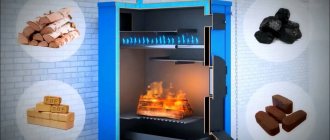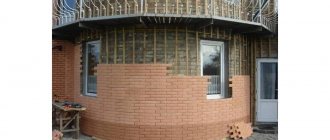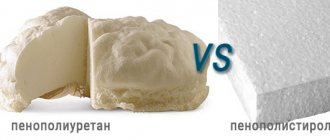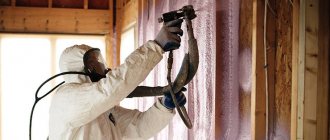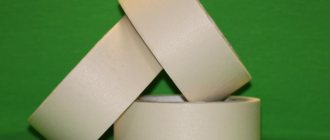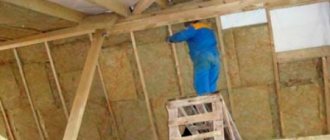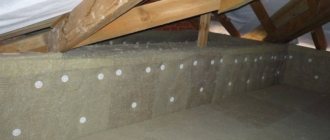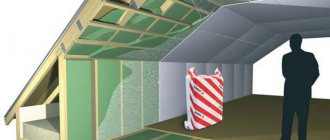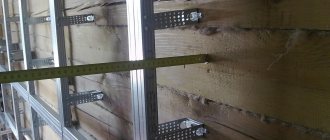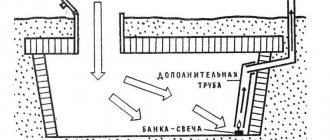Foam insulation - definition and characteristics?
We will try to consider in detail the features of this material and its application, so that everyone who builds their own house can master working with it. It is now not only fashionable, but also necessary to warm yourself. Energy prices are inexorably creeping up, maintaining comfort in the house is becoming an increasingly wasteful activity, so insulating apartments is more important than ever. The same wave has also swept over the construction of houses, where you can acquire a “reliable fur coat” at a very early stage; all that remains is to decide on its type. But if you have a ready-made building, even with finishing, insulation will not be a problem, especially when it was decided to use foam insulation.
The class of these substances is a polymer or a combination thereof; upon reaction between the components or a single component with moisture and air, curing occurs with pre-foaming, due to which the material successfully fills the space, sometimes increasing in volume by 20 times. The disadvantages of this group of insulation are the need for good air flow, that is, ventilation of the room for work. You also need to properly protect the insulation layer after finishing the work, because it is afraid of sunlight and precipitation; over time, the material will simply begin to deteriorate.
But these points cannot overshadow the impression of the advantages of foam materials. Biological and environmental safety allow their use in residential premises of varying degrees of cleanliness. Such insulation consists of pores filled with air or a gaseous reaction product between the components, due to this, good thermal and waterproofing is created, so additional measures to protect the room from freezing and moisture are not required. But this is provided that all external pores of the material are insulated with finishing (internal or external, depending on the location of the insulation).
Foam insulation that is well sealed from external influences will serve you for an incomparably long time, moreover, over a wide range of temperatures, even the coldest Russian winters will not destroy the material, the same applies to elemental heat.
Good insulation is also due to the fact that, when expanding, the foam does not form seams or gaps through which cold could still seep, so the “fur coat” of these materials is the most reliable. They also adhere well to any coating; adhesion guarantees reliable service for many years. This layer also has antiseptic properties and protects the metal from corrosion. Yes, also, the material, as a rule, is not flammable, you see, that’s also a plus.
Entrust the work to professionals
Special equipment for spraying polyurethane foam allows you to perform all work with maximum efficiency.
In fact, insulation of floors in one residential building can be carried out within one working day, provided that the floors are prepared in advance (opened, in the case of hollow floors, or cleaned of dirt). Therefore, there can be no talk of any long-term construction. Our company’s specialists will insulate the floors in your home, regardless of the construction material, since Ecotermix polyurethane fits perfectly on any base. We carry out work of any scale with maximum efficiency, guaranteeing impeccable quality of the result, and all this at an absolutely justified and most favorable price for you. All you need to do is contact us, and we will take care of all the work on insulating the floors in your home. In addition, we provide services for insulating walls, ceilings, foundations, roofs, attics and attics, basements, balconies and loggias. We are ready to completely insulate the house, as well as any premises and objects.
Foam insulation - types of materials
There are quite a lot of foam materials in construction (polyurethane foam, penoizol, foam concrete, polyurethane foam, ecowool), but we will not consider everything in detail. Let's weigh the suitability of several of the most popular ones in private construction. Let's start with penoizol, which for private construction can be seen more often in the form of already hardened sheets, but for large scales it is mixed in special machines, from which it is poured into wall cavities or formwork. The total curing time is about 3 days, but this material is harmful, or so, in any case, the average person thinks, seeing aldehydes in its composition, but the manufacturers deny the danger to humans.
The specialists of the site REMOSKOP.RU have prepared a special calculator for you : Building Heat Loss Calculator . You can easily calculate the heat loss of a building.
Foam concrete and ecowool are expensive and difficult to use, although the filling methods are almost no different from others, so they are rarely used for the construction of a private house, which cannot be said about polyurethane foam (PPU) and polyurethane foam. Many people identify these materials, but they still have some differences. Polyurethane foam is considered two-component, its parts are mixed when prepared in a spray machine, and polyurethane foam is one-component, and swelling occurs due to the influence of compressed air on it, under the pressure of which it comes out of the cylinder, in which it is sold in ready-made form.
Polyurethane foam increases its volume by more than 40 times, and polyurethane foam does not expand as much; moreover, there are fewer closed cavities with air in it, and polyurethane foam almost entirely (90%) consists of closed pores, which is why it is more heat-intensive and reliable insulator. Polyurethane foam is sold in cylinders, the covering capacity of which is about 1 m2, and if you are insulating a house, then you will need a lot of it, it will not be cheap, so polyurethane foam is most often used, which is also called polyurethane foam in a wide circle of builders. This is exactly what the conversation will be about.
Insulation with polyurethane foam - application methods
Depending on the readiness of your room, wall insulation with polyurethane foam can be carried out in several ways - spraying and pouring. In the first case, your construction has not yet been completed, in front of you are bare, rough-hewn walls, some kind of minimal frame is attached to them to divide the area into unique sections, and a thin layer of foam is sprayed on. As it expands, it forms a “fur coat”, which you will then have to level and carry out external finishing. When insulating floors or a roof in this way, you already have a frame in the form of a rafter system and a log under your feet.
Filling is used in cases where it is necessary to insulate a cavity in a wall with a finished finish or during construction the frame of a house consists of several rows of bricks, for example. The difficulty with this process is that you do not see how evenly the foam has filled all the voids, because you are simply blindly pouring it into the cavity on top of the wall under construction or through holes in the wall that is already covered with a ceiling or roof. For this, a special hose is used, which is fixed on the spraying machine and the other end is inserted into a hole in the wall.
The process of floor insulation with foam
Only three stages are enough to allow the floor to retain heat - constructing a frame, insulating with foam, laying the floor covering. If thermal insulation is carried out on an already finished floor, the old floor covering is dismantled and foam is poured. It swells instantly, and a new coating is installed on top of the foam. Well, if we are talking about a wooden floor, in order for the sprayer to gain access to the underground space, the covering needs to be only partially dismantled.
What are the advantages of foam insulation:
- No special surface preparation is required;
- The floor receives absolute sealing;
- There is no need to construct hydrobarriers and vapor barriers;
- There is no need to screed and then wait until it is ready - after just two minutes the foam has complete thermal insulation properties;
- By the way, foam does not give rodents a chance - access is completely closed for them;
- The foam is highly environmentally friendly, because the basis of this material is water, there are no harmful substances in the foam.
According to the manufacturer, the service life of polyurethane foam reaches 50 years. But if we talk about thermal insulation of floors laid on the ground, you need to use mineral wool - this is a more practical option. Although the choice is always yours: the cost of the upcoming repair, the competence of those who will carry out the installation work, and some personal considerations are assessed.
Advantages
Insulation today is not a fashion trend, but a justified necessity.
Due to rising energy prices, it is becoming increasingly more expensive to maintain the desired temperature in your home. It is in order to retain heat and save money that insulation is now being carried out.
They carry out this procedure with their own hands not only in apartments, but also during the construction of a house, where thermal insulation is created at an early stage. At the same time, using polyurethane foam as insulation, the process is not difficult.
This substance is a polymer that foams during a reaction between it and moisture (in polyurethane versions, the reaction takes place between two polymers), sometimes increasing by 120 times, filling the free space, and then hardening.
For work to proceed properly, a constant flow of air is necessary, in other words, good ventilation in the room.
In addition to polyurethane foam, foiled insulation would be an interesting choice for thermal insulation of a living space. Details here: https://teplo.guru/uteplenie/utepliteli/folgirovannyiy.html
After their use, no additional measures are required to ensure frost protection. But all this is relevant only if the insulation is insulated from the outside with finishing.
If the foam is properly installed and protected from external influences, it will serve for many years. At the same time, such insulation will allow you to retain heat even in severe Russian winters.
This is due to the fact that the foam, when exposed to different temperatures, does not form seams through which cold air can leak into the room. This is what allows a “fur coat” made from foam materials to be the most reliable.
Unfortunately, polyurethane foam is not a barrier to rodents. You can learn about insulation materials that can resist mice and rats here: https://teplo.guru/uteplenie/utepliteli/kakoy-material-ne-gryizut-myishi.html
It easily attaches to almost any type of coating, with the exception of polyethylene. Also, a layer of this material can provide antiseptic properties and protect the metal from corrosion.
Which PPU attic insulation to choose?
An uninsulated attic, the temperature in which is close to the outside temperature, creates many problems:
- in summer, hot air accumulates there, raising the temperature in the rooms adjacent below;
- In winter, cold air tends to sink down and, having gathered in a large mass, falls on the premises, penetrating to the first floor. This can be seen with a thermal imaging survey showing heat loss. The device shows how cold air passes down through the attic. After insulation, all these unpleasant phenomena disappear.
There are two options for insulating the floor of a cold attic:
- ventilated, in which only the floor is insulated, while the remaining surfaces remain cold. In this case, it is necessary to provide ventilation through the vent and soffits. This is a cheap insulation option, in which cold and hot air will not penetrate downwards, but the temperature inside the attic itself will remain the same as outside;
- unventilated, in which all surfaces of the attic are insulated - from the ridge to the floor, but for such an attic it is necessary to provide a ventilation system. Modern technologies make it possible to install any ventilation system in the house that effectively removes air from all rooms.
If you are faced with a choice of which option to prefer, choose the non-ventilated one. Even if the attic is not planned to be used as a room, such insulation will protect the house from cold and noise.
Processing methods
How insulation will occur directly depends on what stage of construction the room is currently at.
Usually either spraying or pouring is used. So, if you only have unfinished walls, use the first option.
First, a minimal frame is made, allowing the surface to be divided into sections of the required size, after which a small layer of foam is sprayed. It will expand and create a kind of “fur coat”, which will need to be leveled to one level and finished.
If you carry out floor insulation in this way, it is necessary that the logs and slings have already been laid. In the same way, you can carry out thermal insulation of the building facade and balcony.
Filling is used when it is necessary to carry out insulation in a wall cavity that already has an external finish. This method is also used during construction if the frame consists of several layers of brick at once.
The problem with such filling is the uneven filling of voids, when it is not visible what is behind the wall. To carry out this procedure more accurately, a hose is used that is connected on one side to the spray machine, and the other side is inserted into the wall.
Preparation
In the case of filling the space between the walls, much preparation is generally not required.
There will also not be much work involved in applying foam by spraying, since communications will be laid directly in it.
The only thing that will need to be prepared in advance is a frame on the wall to divide the wall into certain sections, which will then be filled.
Polyurethane foam is also useful for treating seams when insulating the foundation. Details in this material: https://teplo.guru/uteplenie/fundament/pravila-teploizoljacii.html
The main preparation, of course, is safety precautions. First of all, you need to wear a respirator, goggles, a special plastic suit and gloves.
You need to do two of them at each step, one in the middle of the wall, and the second on top.
Before starting work, all cracks, except the one into which the foam will be poured, must be sealed so that during expansion the solution does not begin to leak out of them. All the cracks that still remain in doorways, near window frames and even sockets also need to be sealed.
You may also be interested in an article about penoizol.
Read the article about making penoizol with your own hands here.
After reading this article, you will learn everything about the technology of insulating a brick house.
Application
Spraying begins, moving from the floor to the ceiling.
Try to keep the layer small and gradually move up. After about 30 cm, stop and see what layer of foam forms. If necessary, apply a little more foam on top of the first layer.
Over time, you will develop an understanding of the optimal amount of solution to spray.
But for pouring, it will be very problematic to correctly distribute the foam evenly throughout the entire space. The fact is that, in theory, you should first pour in the liquid, and then it, expanding, gradually becomes foam.
But the catch is that it is almost impossible to perform this procedure, since you cannot see what is happening inside. That is why it is recommended to install the hose in such a position that it points straight down, and then start pouring. So, the liquid will first fill all the cracks and niches from below, after which, expanding, it will move upward.
Specifications
Plates made from liquid polyurethane have good technical characteristics for insulation:
- thermal conductivity coefficient - 0.028-0.030 W/(m×°K);
- density - 40-160 kg/m3;
- vapor permeability - 0.02-0.05 mg/(m*h*Pa);
- compressive strength to failure - 200 kPa or more;
- tensile strength when bending at break - not less than 300 kPa;
- water absorption when completely immersed in water for 24 hours is 1-1.5%.
The given characteristics require comments, especially the thermal conductivity coefficient.
The thing is that some of the manufacturers on their websites post fantastically low thermal conductivity values - 0.017-0.025 W/(m×°K). It is not explained where these numbers come from. However, if you delve headlong into the specialized literature, it turns out that only in laboratory conditions can it be obtained a material with a thermal conductivity of 0.022 W/(m×°K).
And this is subject to compliance with all parameters, from the recipe to the temperature regime. And another very important point that goes unnoticed is that the density of the prototypes was 28-30 kg/m3. PPU slabs have an average density of 50-70 kg/m3. And we know from school physics lessons that denser bodies conduct heat better.
But that's not all. Record low thermal conductivity coefficients are achieved only when using r141b freon for foaming. But it is prohibited for use on an industrial scale, and its production is generally prohibited in Europe. Other types of foaming agents provide higher thermal conductivity values.
Therefore, in European countries, insulation with a coefficient of 0.028 W/(m×°K) is considered to be of the highest quality. In relation to Russia, the thermal conductivity value of PU foam boards of 0.028-0.032 W/(m×°K) is real and these are the best thermal insulation properties among all types of insulation offered in the trade.
Final stage
First of all, you must first wait until the polyurethane foam has completely hardened.
On average, this takes 3 days if there is a proper supply of fresh air.
Now the outer part of the spraying is leveled, after which it is covered with finishing material. This will protect the thermal insulation from various mechanical damage.
In the case of filling with polyurethane foam, it is necessary to remove smudges, if any, and seal all holes in the walls through which the foam was supplied.
Watch a video tutorial on the rules for performing work when insulating a house with polyurethane foam with your own hands:
Features of insulation
To independently insulate a house with foam, you need a protective suit. Foam is usually sprayed from a can onto the entire surface of the facade; it fills the voids between walls, rafters, and beams.
There are many advantages to this type of wall insulation with foam in the air gap. The main ones include:
- vapor permeability;
- fire resistance;
- ability to increase in volume;
- resistance to various types of mechanical stress;
- the upper temperature limit remains within +80 degrees.
Foam is often used to seal cracks that remain after installing plastic windows.
Due to this, the thermal insulation in the apartment also increases. It is convenient to use a pneumatic gun for insulating not only windows and external walls, but also foundations, loggias and balconies, and pipes. After treatment with foam insulation for walls, the facade turns out perfect - without visible joints or seams. One cylinder contains on average 600-700 ml of the composition, which is enough to treat a square meter with a layer up to eight centimeters thick. Operating such a gun is very simple: first, a full cylinder is inserted into it, then you need to point it at the surface to be treated and pull the trigger. On average, the applied composition hardens within 24 hours.
Insulation technologies
Installation of polyurethane foam can be done in one of two ways:
- spraying;
- filling.
Let's look at each technique in more detail.
Thermal insulation by spraying
Installation for spraying polyurethane foam
Installation of insulation by spraying is carried out using special installations, into which two main components are supplied from separate containers - polyol and polyisocyanate. Then the ingredients enter a spray gun, where they are mixed and applied under high pressure to the surface to be insulated.
Installation of polyurethane foam is carried out as follows:
- Before performing installation work, a wooden or metal sheathing is mounted on the wall in increments of 30 cm. If the roof or foundation is thermally insulated, there is no need to install a frame.
- Open the taps on the cylinders where the components are located, pull the trigger of the gun, from where foam begins to flow.
- The application of foam begins from the very bottom of the wall. The gun must be at a distance of at least 20-25 cm from the surface.
- In order for the composition to be distributed evenly, it is necessary to move the jet very smoothly.
- Before moving to a new location, the gun must be turned off.
- If two-layer spraying is assumed, then the second insulating layer is applied only after the first one has completely polymerized.
- During the work, you need to ensure that the insulation does not protrude beyond the sheathing; after the foam has hardened, all irregularities must be carefully trimmed with a knife.
- After polymerization of the insulation, the walls are reinforced with mesh, and then the finishing is done.
Thermal insulation by pouring
This technique involves pouring foam into specially designated cavities. To do this, in those places where insulation is required, small holes are made, into which polyurethane foam is then poured. The foam fills all the voids, crevices and cracks, forming a dense thermal insulation layer.
To fill the insulation, you can use the same settings as for spraying, but in this case it is necessary to reconfigure some parameters. There are also special units that allow thermal insulation to be performed at a higher quality level.
Types of foam insulation
Foam insulation may differ in its structure and composition. We can distinguish the main types of material for insulating walls and windows:
- Penoizol. It contains aldehydes, which are harmful to health, although manufacturers often claim the opposite. It dries much longer than polyurethane (complete drying time can reach three days). Typically used for insulating attics, load-bearing walls and structures. Can be purchased in the form of ready-made slabs or as a liquid composition.
- Ecowool and foam concrete. Can be purchased in liquid form, most often used for pouring foundations. They are practically not used when finishing facades due to their significant weight, which puts a large load on the walls. In addition, the high cost often speaks against this material.
- Polyurethane foam. Suitable only for sealing seams, joints, holes, since it does not allow moisture and steam to pass through, and this is a critical point for insulating material. When interacting with air, its volume increases twenty times, while there is a minimal amount of air bubbles inside. Can be purchased in convenient small-volume containers that have a significant shelf life.
- PPU or polyurethane. The most common option, which is considered the most universal. Polyurethane insulation is very effective as thermal insulation for facades. It consists of two components; they must be mixed by machine immediately before application. The foam expands thirty to forty times from its initial volume, and small balloons form inside. Due to this, high-quality insulation of the house is achieved.
Insulation of floors in a wooden house. How to insulate a floor in a wooden house
Insulating the floor in a wooden house is not only a desirable, but in most cases a mandatory stage of construction. Before you insulate the floor in a wooden house, you need to know that a thermally insulated floor makes it possible to significantly reduce heating costs and create optimal conditions for year-round living in a country house. The insulated design allows you to normalize and maintain the temperature in the premises, both in the summer and in the winter season.
Currently, sawdust and expanded clay as insulation have lost their relevance and are increasingly being replaced by modern materials: polyurethane foam, penoplex, mineral wool. Each of them has its own pros and cons.
Laying mineral wool
All installation work is limited to installing double floors. The primary base should be a subfloor made of untreated boards. Individual elements are fixed to wooden beams using tongues, ensuring a tight fit. Logs are installed on the rough flooring, the distance between which should optimally be no more than 1 m. The resulting space is filled with insulation.
Taking into account the fact that mineral wool can absorb moisture and thereby lose its qualities, it is necessary to lay a layer of waterproofing underneath it. On the other side of the insulation, a polyethylene film is laid, or a PVC membrane is used instead. The last layer of the “pie” is a flooring made of waterproof plywood (fibreboard or chipboard). The last stage is the installation of decorative flooring. Using the presented technology, you can independently insulate the floor in a dacha in a wooden house, even without being a professional.
Insulation with polyurethane foam
Polyurethane foam is excellent for thermal insulation work in wooden residential buildings, the reason for which is the low density of polyurethane foam, which gives minimal load on the supporting structure as a whole. Sprayed polyurethane foam simultaneously performs several tasks: waterproofing, thermal insulation, vapor barrier and sound insulation. A layer of insulation more than 2 cm thick can provide a reliable barrier against moisture penetration. Insulating the floor with polyurethane foam in a wooden frame house requires the use of professional equipment.
The unique application technology ensures the durability and quality of the coating. Due to the porous structure of wood, moisture is quickly absorbed and therefore requires careful thermal insulation.
The technology for insulating a wooden floor with mineral wool and polyurethane foam is quite different. So, if in the first case the installation is complicated by the need to prepare the base for the material, the organization of a waterproofing and vapor barrier layer, then in the second there are no these steps.
The foam clings perfectly to the wood, providing high-quality thermal insulation without any joints, gaps, or seams. Installation is most often carried out by professionals, which results in additional costs.
Features of insulation in a wooden house in the video below.
Insulation with foam plastic in a wooden house
This is one of the most economical options. When choosing polystyrene foam, you need to pay special attention to its density, because for flooring, preference is given to slabs with values of 35 kg/m3. Insulation is carried out using the following technology:
- The old coating is dismantled down to the rough or concrete base;
- The logs are installed at a distance of 70 cm from each other;
- Place a vapor barrier film in the recess between the joists. In turn, it is fixed to the slats using a construction stapler;
- The foam sheets are adjusted to the required dimensions and their space is placed between the joists;
- The insulated floor is covered with a polymer film, which acts as a waterproofing layer;
- The final stage is laying the floorboards and laying decorative flooring.
Insulation of the floor with polystyrene foam in the video below.
Which variety to choose
In many ways, the choice will depend on the specific situation and what area needs to be treated. Using an example, we can consider the most common cases when a house needs foam insulation:
- If you need to seal cracks or eliminate any other defects on the surface, then polyurethane is suitable. But such material should not be exposed to sunlight.
- If you need to fill a large volume, then penoizol is suitable. But an ordinary cylinder will not be enough; you will need to purchase a special device with high pressure. You don’t have to buy it at all - you can rent it or borrow it from friends, because no one will use it often.
- If you need to seal small cracks and carry out thermal insulation in small areas, you can buy a cylinder with regular polyurethane foam. It does not support combustion, after hardening it is particularly hard, and it has an ecological composition.
- If defects are found on the outside of the wall, then you need to apply a composition based on polyurethane. It is applied directly using a special cylinder or apparatus.
It is worth remembering that foam insulation creates errors inside the layer that need to be eliminated. To do this, you will need a long hose to push the material inside. If it is necessary to fill air gaps inside the insulation, then holes are made in the wall with something sharp.
Polyurethane foam is not suitable for insulating the entire external facade - it does not have the appropriate characteristics necessary for this. Therefore, you should not choose it for these purposes, even despite its more economical cost.
Distinctive features of materials
- quick insulation of both small and large areas;
- there is no need to install an additional base, profiles, membranes, vapor and waterproofing films;
- are not subject to rotting and mold formation;
- have a high degree of fire safety (not flammable, but can melt);
- interacting with metal, they provide a corrosion-resistant coating;
- have a uniform seamless structure;
- optimal heat-saving characteristics.
Therefore, it is difficult to talk about environmental and operational parameters.
Among the disadvantages of foam insulation, it is worth noting the following:
- do not tolerate exposure to sunlight;
- waterproofing properties are not ideal
- This material requires compliance with application conditions: you need a special canvas suit, gloves and goggles with a mask.
- Due to the rather low degree of vapor permeability in the room, a thermal effect is formed, so it is necessary to ventilate the room well.
For example, if we compare thermal conductivity, polyurethane foam is much superior to penoizol (the coefficient of the first is 0.019 W/m-k, and the second is 0.040 W/m-k). The density of the material characterizes the ability to operate under loads. Penoizol indicators are about 15 kg/m3, the density of polyurethane is approximately 25 kg/m3.
During standard operation, PPU insulation and penoizol are approximately the same (service life is about 50 years). In terms of price characteristics, polyurethane foam costs approximately 30% more than penoizol.
Thus, when choosing foam insulation, you need to take into account specific parameters for each individual situation.
Watch the video, which uses the example of a specific brand to discuss the features of working with foam insulation in cylinders:
Advantages and disadvantages
Before you start insulating your home, you need to weigh the pros and cons. Of course, many are interested in what benefits will come from this method of insulation. These include:
- fast speed of insulation, even if a large surface is processed;
- foam is not subject to biological influences, mold or mildew is unlikely to appear on the wall;
- low-flammability material: it can only melt at temperatures above 80 degrees;
- there is no need to first attach the frame to the facade - this saves effort, time, and money;
- a monolithic surface is obtained without seams into which cold air could penetrate;
- When insulating pipes or other metal elements, a sufficiently dense layer is created, through which moisture will not seep through and corrosion will not appear.
But, like any other insulation method, it has its drawbacks. You should know about them in a timely manner:
- should not be exposed to direct rays;
- inability to interact frequently with water;
- cost of material: to insulate large areas you will need to buy or rent special equipment;
- insufficient level of vapor permeability, artificial ventilation will have to be installed inside;
- You cannot perform the application procedure without a tarpaulin suit, a respiratory mask with goggles and gloves. Of course, all this is unlikely to be found at home, and this is also an extra waste of money.
People have long begun to insulate their homes with foam, but the ideal means of insulation has not yet been invented.
Of course, the effectiveness of this method cannot be disputed. The main thing is to buy high quality materials. If you have equipment for installation, the process will not take much physical effort and time. After applying the foam composition and after it has completely dried, craftsmen advise treating the surface of the facade with a special coating, which can be purchased at any hardware store. This is required first of all to protect human health, and only then - to protect the insulation itself.
